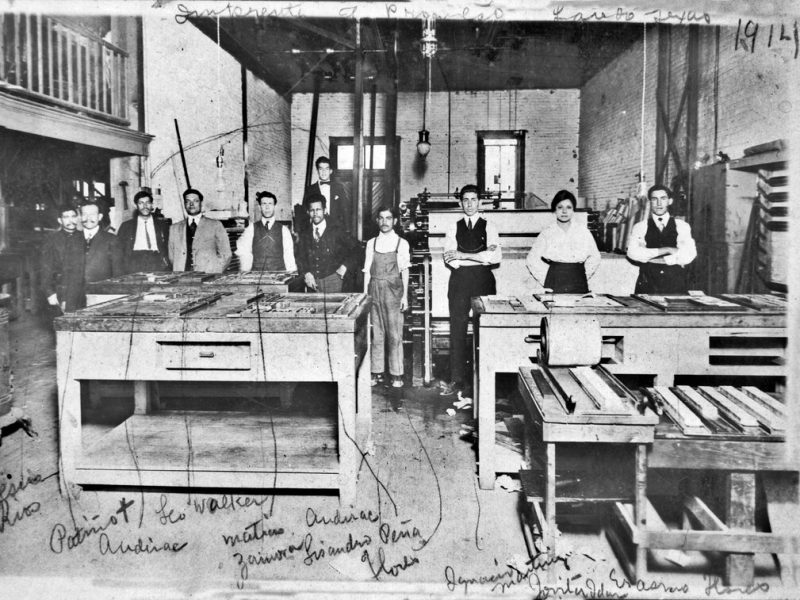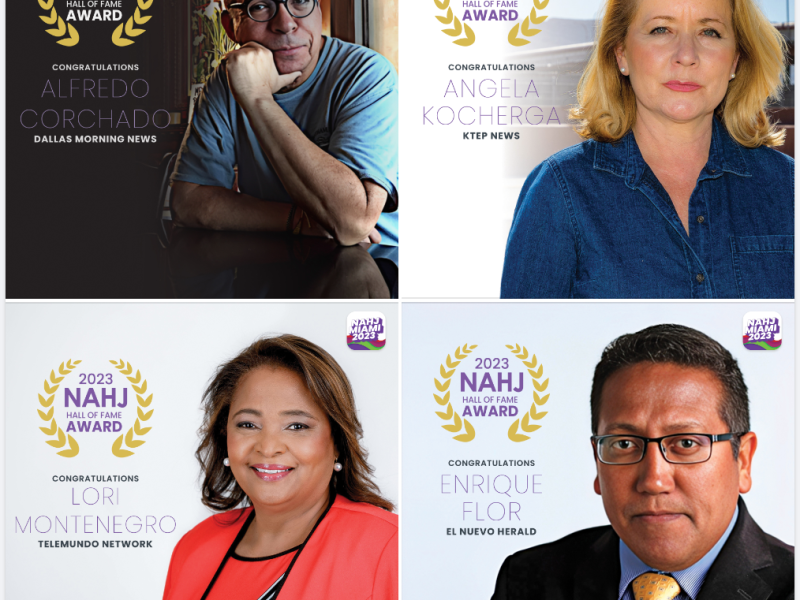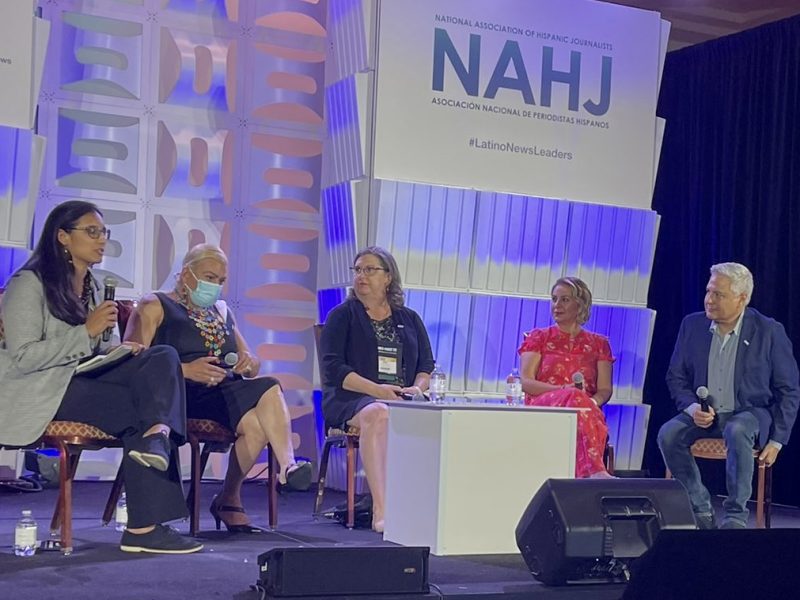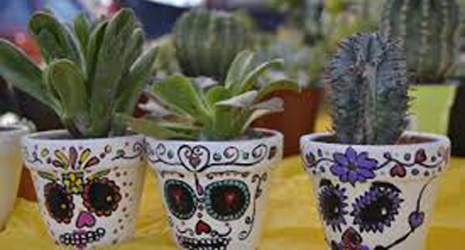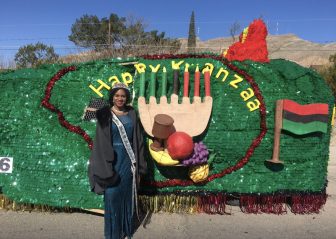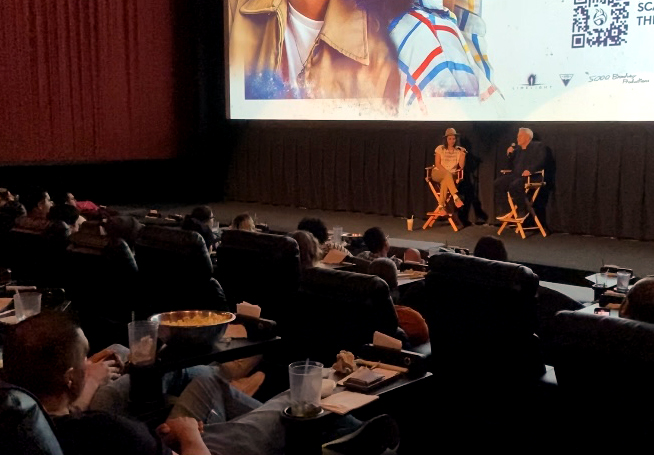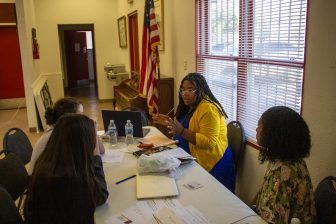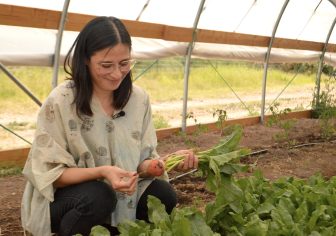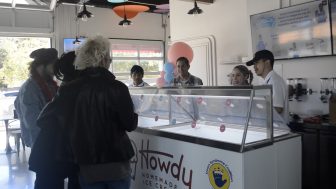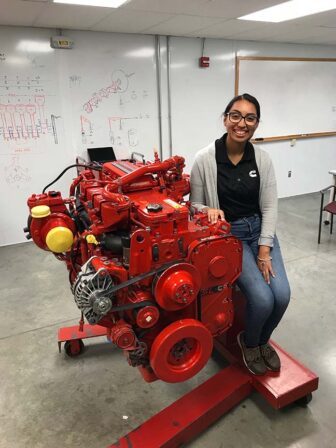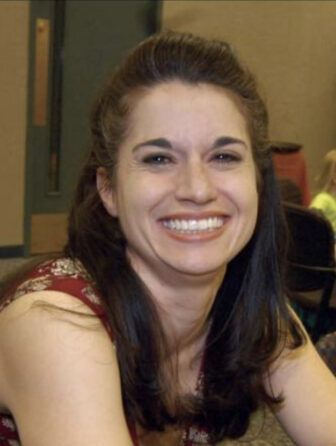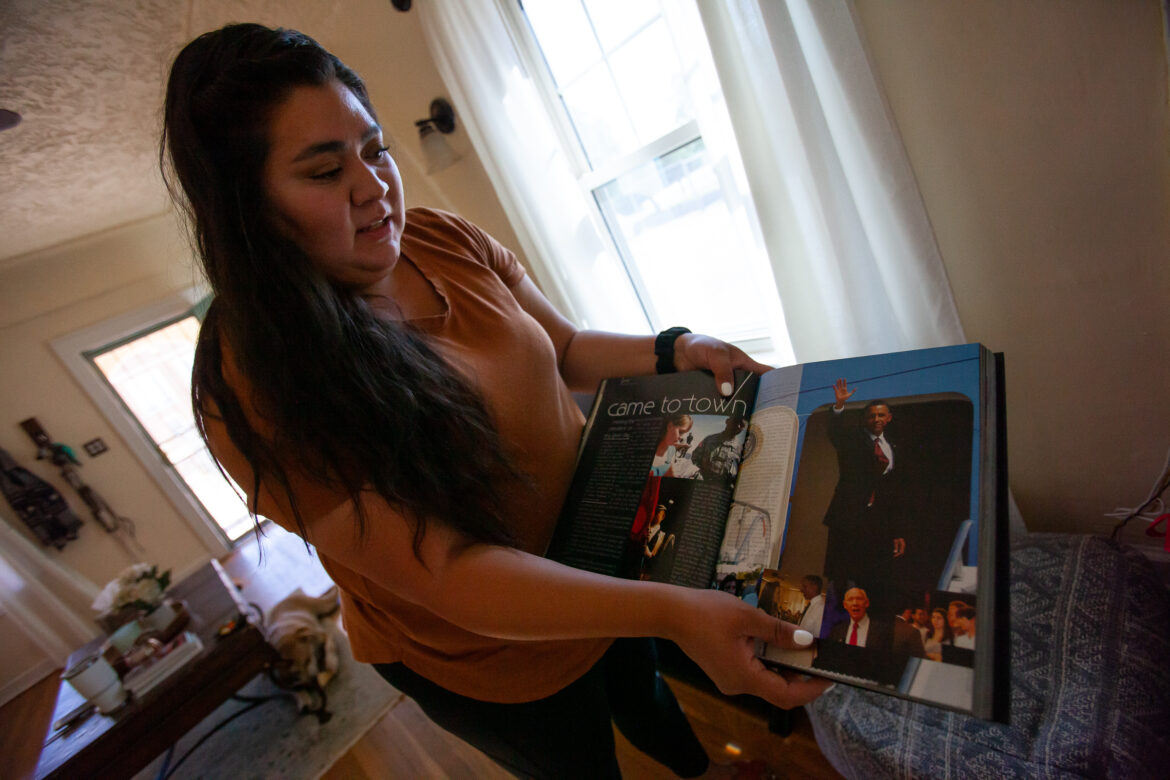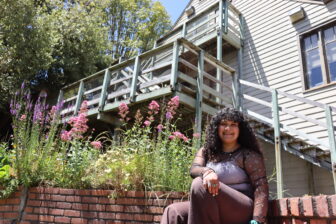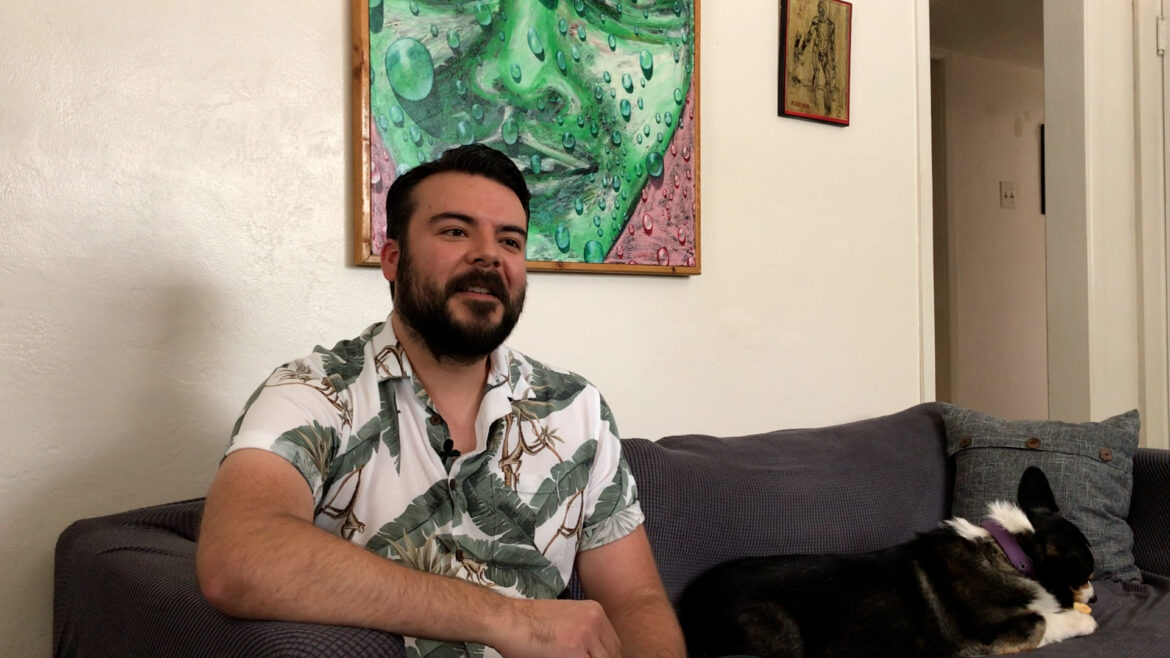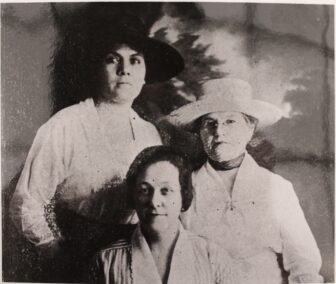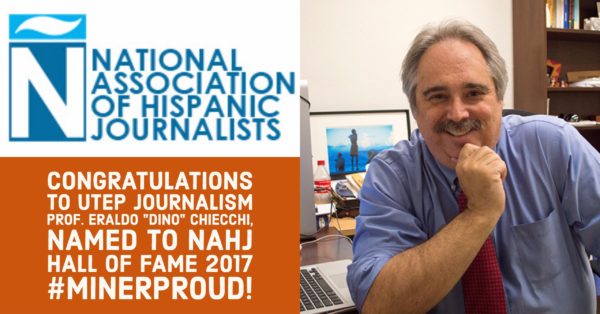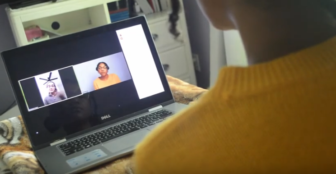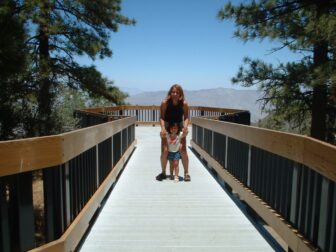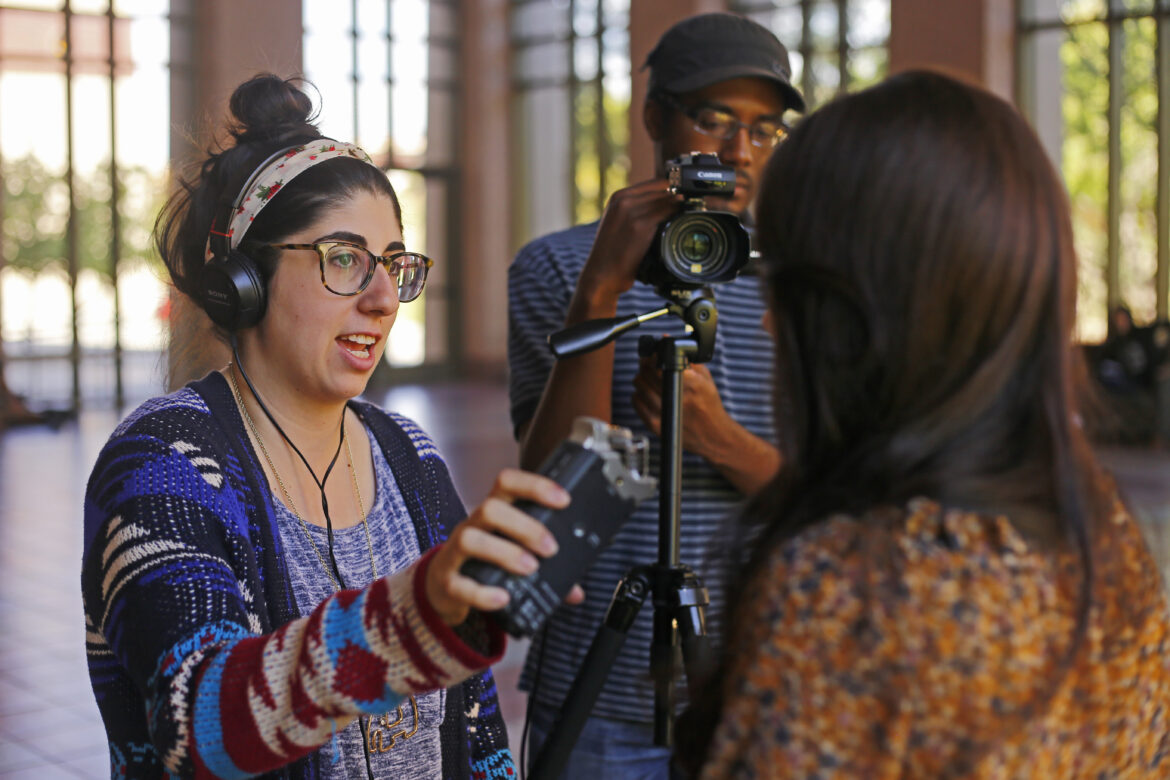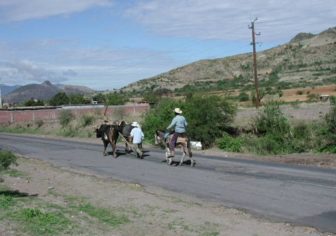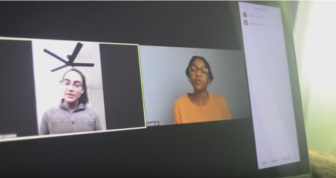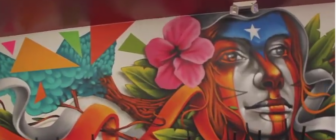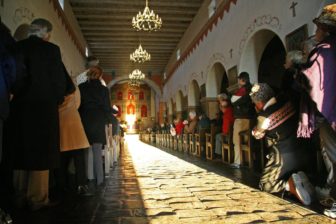WASHINGTON – The U.S. Mint began circulating a quarter honoring Texas Mexican-American journalist Jovita Idár, on Aug. 14. It is the fourth coin in the 2023 American Women Quarters Program on August 14th. Jovita Idár, was a Mexican-American journalist, activist, teacher, and suffragist. She made it her mission to pursue civil rights for Mexican Americans and believed education was the foundation for a better future.
What we’ve lost since the Miss Black El Paso Pageant ended in 2018
|
I never imagined myself as the type of girl to compete in beauty pageants. I never really liked being in the spotlight.
However, from an early age, my mother just knew that one day I would be a contestant in the Miss Black El Paso pageant, walk across the stage, accepting my crown and sash. We argued about it for years. Finally I gave in and ran for Miss Black El Paso in 2016.
In the year of my reign, I attended many events throughout the city. The majority of events my mom and I booked ourselves.
Young Black girls would run up to me and hug me and each time I was reminded why this was so important. In a predominantly Hispanic city like El Paso there are not many Black pageant queens walking around. In these little girls’ eyes I was a hero.
Borderland queer youth embrace new film based on bestselling book
|
It was an historic evening at the screening of Aristotle and Dante, a queer story set in the Borderland. Fans of the YA novel by Benjamin Alire Sáenz packed the theater to watch the movie when it opened at the Alamo Draft House in El Paso. “I think our voices are not always heard and especially for queer youth trying to find a place in the world, in their community, in their city,” said Enrique Perea, at the special screening in September. “ I think it’s one of those things where you think about, hey, my story needs to be heard and I matter”
Aristotle and Dante Discover the Secrets of the Universe, published in 2012, tells the story of two boys in El Paso juggling high school, and growing up while learning more about themselves and the love they feel for one another while they defy social and cultural norms.
Lin-Manuel Miranda is the executive producer with Aitch Alberto, a transgender film director. The movie feature several well-known actors including Eva Longoria and Eugenio Derbez, both prominent Hispanic voices in the film industry.
Neighborhood center, anniversary newspaper highlight Black El Paso stories
|
Lifelong El Pasoan Karen Cooper Linen calls the little rock house at 3231 Wyoming “a hidden treasure.”
The house on a quiet street corner in El Paso’s East Five Points neighborhood connects to a larger building to make up the McCall Neighborhood Center. Inside is a vibrant community gathering space and repository of El Paso’s Black history and achievement. “A lot of people that grew up here don’t know that it’s here,” said Cooper Linen, who serves on the center’s board. The McCall Center was established in 1983 by Leona Ford Washington, a teacher and community activist. It serves to preserve and showcase the history and accomplishments of Black El Pasoans as well as the contributions of African Americans in our country’s history.
Food as art in the social justice movement
|
Since its founding in 2010, the non-profit La Semilla Food Center in Anthony, New Mexico, has been creating a vibrant food system that prioritizes community connections, equitable economic practices and environmental health over profits.
Howdy Homemade ice cream creates jobs for El Pasoans with disabilities
|
A new Downtown ice cream shop is serving up unique flavors along with work opportunities for El Pasoans with special needs. Howdy Homemade ice cream opened this November on the first floor of the Roderick Artspace at the intersection of Missouri and Oregon. The Dallas-based franchise is staffed primarily by teens and adults with intellectual and developmental disabilities (IDD). According to the Bureau of Labor Statistics, only 23% of people with disabilities in the U.S. are employed, compared to 68% of people without disabilities. After almost seven years since its opening, Howdy Homemade now has 10 franchisees across the country, four of which are in Texas.
Support networks help encourage Latina students in science, tech careers
|
Walking into her intro to computer science theory class as a freshman at the University of Texas at El Paso, Montserrat Molina felt out of place. The room was full of men, except for three other women besides herself.“I felt very scared. I was very intimidated,” said Molina, who was majoring in computer science.Molina said the experience was eye opening. It was the first time she felt like a minority and that she didn’t belong. But she stuck it out and continued to follow her degree planMolina’s experience is not an isolated one and many young women choose not to pursue college studies in the STEM fields of science, technology, engineering and math.
Journalism internship endowment honors former UTEP student Annette Rainville
|
Editors note: This article was originally published on September 14, 2014 in the special Centennial Issue of The Prospector. Annette Rainville, who was a reporter and editor at The Prospector, graduated from UTEP with a bachelor’s degree in print media in spring 2004. During her long process of going to school and working to raise her twin boys, Anthony and Ryan, and daughter Audrey, Rainville was also fighting her initial battle with leukemia. She was in remission and went to work as an intern with the Scripps Howard News Bureau in Washington, D.C. in fall 2004. She worked alongside reporter Lisa Hoffman, who was the bureau’s main reporter on the war in Iraq.
Longtime KVIA-Channel 7 GM Kevin Lovell retiring; Brenda De Anda-Swann named successor
|
El Paso – KVIA-TV announced this week that Brenda De Anda-Swann will take the helm as general manager when longtime GM Kevin Lovell retires at the end of May.
The newcomers guide to a borderland Christmas
|
Holidays around the country are celebrated with unique traditions, special to their region. And the holidays in the borderland also have their own festive recipe. Sharing a border with Mexico, El Paso is a melting pot of cultura with a dash of America and a dash of Mexico.In a city where the population is predominantly Mexican-American, the spices of two different cultures make the borderland holidays a celebration like no other. If you are new to El Paso, here’s all you need to know to celebrate borderland style. The Holiday prep
The festivities of the holiday season kick off early in the borderland.
Photojournalist has unique view of border life as a non-Spanish-speaking child of immigrants
|
Briana Sanchez frowns at the images on her computer screen.
“I need to add some happier photos in here,” she says. Sanchez, lead photojournalist at the El Paso Times, knows better than anyone the difficult times that the border has been through in the last two years. After spending eight years away, first in college in Georgia and Arizona and then working at newspapers in the Midwest, Sanchez returned home to El Paso in the spring of 2019.
“As soon as I moved back here, we had those patriots at the border, protecting the border on their own volition,” she says. “And then we had the ‘We Build the Wall’ people. And then we had the mass shooting.
Daughter of Salvadoran immigrants cultivates inclusive space in rural white community
|
As the oldest daughter of immigrants from El Salvador, Karina Ramos-Villalobos’ job as a child was to translate and guide her parents through the language barrier they faced in their adopted country.
Photojournalist has unique view of border life as a non-Spanish-speaking child of immigrants
|
Briana Sanchez frowns at the images on her computer screen.
“I need to add some happier photos in here,” she says. Sanchez, lead photojournalist at the El Paso Times, knows better than anyone the difficult times that the border has been through in the last two years. After spending eight years away, first in college in Georgia and Arizona and then working at newspapers in the Midwest, Sanchez returned home to El Paso in the spring of 2019.
“As soon as I moved back here, we had those patriots at the border, protecting the border on their own volition,” she says. “And then we had the ‘We Build the Wall’ people. And then we had the mass shooting.
From borderlands of Brownsville and Tucson, Chicanx artist explores themes of barriers, belonging
|
Artist Alejandro Macias was born, raised and lived for more than three decades in Brownsville, Texas, communicating the borderlands experience through visual art as a second-generation Mexican American.
In 2019, he moved hundreds of miles west to the borderlands city, Tucson, in Arizona, to continue working on his art and to teach at The University of Arizona in the School of Art. His work, which in part is inspired by Chicanx activist work, draws on artists who transformed the human figure, artistically. His art reflects his and others’ lived experience, striving to find a sense of belonging in the borderlands region. His work also reflects social-political climates of the times.
Macias’ paintings focus on identity, the Mexican American experience within U.S. society, migration, his own family history and the many other families struggling and who have witnessed barriers in the borderlands. He uses images of himself in some work as representative of others with visuals often related to physical and metaphorical barriers in the Mexico-U.S. borderland region, which embodies two nations, two cultures with different identities that often merge together.
How police work for women in El Paso has changed over the years, but still has a ways to go in recruiting
|
The history of women on El Paso’s police force dates back to 1913, but much has changed over the years. “Women were seen more as social workers than police officers because it was a very male-dominated occupation,” said Egbert Zavala, an associate professor in the Criminal Justice Department at the University of Texas at El Paso. Early police work by women mostly involved looking for runaway girls, making calls on community residents, patrolling the streets and arresting prostitutes. “There was this idea, back in the day, that males had to deal with dangerous criminals,” Zavala said. https://youtu.be/EOnjuEVQzH4
According to records with the El Paso County Historical Society, the first policewomen in El Paso appointed in 1913 were Mrs. C.A. Hooper, Mrs. L.P. Jones, and Juliet Barlow.
Artists reflect Segundo Barrio pride in south El Paso mural
|
EL PASO — Three artists who grew up in the Segundo Barrio collaborated to create the mural “Quinto Sol- The Rebirth,” in south El Paso. Francisco Delgado, Francisco Camacho, and Bobby Lerma united to paint the mural to inspire children from the neighborhood with memorable artwork. “I believe that it was destined to be on that wall. Everything felt in the right place, at the right time, with the right people, with people who have a good heart, with people that care about the community, and with people who have a strong incomparable love to the neighborhood,” Lerma said. Delgado calls himself a “bordeño,” an artist whose artwork is a mashup of being a Chicano and a “fronterizo.”
Vulnerable transgender asylum seekers create shelter together in Juárez
|
On a warm February afternoon, Susana Coreas stands outside the door of Casa de Colores in Ciudad Juárez holding a phone in one hand and a 50 peso bill in the other.
As she hands the money to two women leaving the building, Coreas pauses her phone call and greets the visitor at her door.
“Adelante, esta es su casa,” she says. Go ahead, this is your home.
Supporting Borderland journalism students opens a world of opportunities
|
Borderzine note: Our publication is more than a website that covers life along the border. It is a training tool that gives aspiring journalists from El Paso and Ciudad Juarez a real newsroom experience in multimedia reporting. This month we are asking readers to help us in our mission by making a contribution on Borderzine’s behalf to NewsMatch. Thanks to NewsMatch and two other organizations that support diversity in news, every dollar donated before Dec. 31 will be tripled.
Innovating journalism education during a pandemic with a little help from our news network and donors
|
When COVID-19 first swept across the country this spring, news organizations began canceling internships for college students. That was devastating news for students at Hispanic-Serving Institutions like the University of Texas at El Paso who are trying to stand out in the media job market. Strong internships are needed for professional experience and important networking opportunities that can lead to better prospects at graduation. Fortunately, thanks to Borderzine’s dues-paying membership in the Institute for Nonprofit News, we were able to reach out to a wide network of digital media organizations around the country. The UTEP multimedia journalism program was able to place seven of our students in remote summer internships with INN members.
Hispanic, Latino … a single word is too small to capture who we are
|
In the leadup to the Nov. 3 election and in its aftermath, there’s been a lot of talk about how Latinos aren’t a monolith, and the messiness of trying to lump so many different people into one group. It’s also something Brandy Ruiz has been thinking about. She’s a journalism student at the University of Texas at El Paso. What, she wondered, does it even mean to be Latino or Hispanic?
Culture Shift: Looking at Identity in the Borderland Bubble
|
In this episode of Our Border Life we talk about those moments when people realize they’re in a culture shift – that something fundamentally has changed about their identity. Specifically, the growing awareness of the multi-layered identities among people living in the U.S-Mexico borderland region of El Paso and Ciudad Juarez. https://soundcloud.com/borderzine-reporting-across-fronteras/looking-at-identity-through-the-borderland-bubble
We meet with Gustavo Reveles, who was born in El Paso and spent the first 15 years of his life living on both sides of the border. In a conversation with a friend, Martin Bartlett, Reveles talks about how he didn’t realize he lived in a culture bubble until he moved away for a job after college.
“You grew up thinking you’re both Mexican and American.
Microsoft investing in local journalism for El Paso-Juarez community, UTEP students
|
The Microsoft local journalism project will include a grant to the El Paso Community Foundation to support nonprofit news organizations, including El Paso Matters, KTEP public radio, the University of Texas at El Paso multimedia journalism program and La Verdad.
Indigenous Mexicans survive pandemic by drawing on tradition in the absence of government action
|
By Jeffrey H. Cohen, The Ohio State University
While the coronavirus hammers Mexico, some Indigenous communities in the southern Mexican state of Oaxaca are finding creative ways to cope. Oaxaca, one of Mexico’s poorest and most ethnically diverse states, is home to numerous Indigenous communities, including the Zapotec people. I have spent many years in the central valleys of Oaxaca conducting anthropological research in rural Zapotec villages, documenting the people’s lives, migration patterns and food culture. Oaxaca. TUBS/Wikimedia Commons, CC BY
Now, my summer research in Oaxaca canceled due to the pandemic, I am learning from afar how the Zapotec are confronting the coronavirus given such complicating factors as chronic poverty, inadequate health care, limited internet, language barriers and a lack of running water.
Video: Why does it matter how pandemic data is controlled?
|
By Julia Lane, New York University
The Conversation Editor’s note: When the Trump administration ordered hospitals to report COVID-19 data to the Department of Health and Human Services rather than the Centers for Disease Control and Prevention as they had been doing, it provoked worries and criticism from public health experts. The White House said that the HHS system will provide more accurate data faster, but the switch did raise concerns that political considerations would influence what data is reported. Professor of public policy Julia Lane, who recently published the book “Democratizing Our Data: A Manifesto,” explains why public data is vital to public health and democracy in general. What was the main concern over the data? The whole point of having a career civil service running public data systems is that, because they can’t be fired, they have the integrity to produce the statistics the best way possible.
Brands may support anti-racism movement, but advertising still needs to decolonise
|
Carl W Jones, University of Westminster
Brands such as Nike and Adidas to PG Tips and Space NK have been expressing solidarity with the Black Lives Matter movement by issuing statements and adverts of support – from Nike playing with their memorable tagline of “Just Do It” by asking consumers “for once, Don’t Do It” to the #Solidaritea hashtag taken up by many tea brands. Many of these messages have been accompanied by promises to take a hard look at each company’s history and current working practises to see what changes can be made to address structural racism. The idea that we need to decolonise various areas of society is finally growing. But the idea itself is, of course, nothing new. Calls and attempts to decolonise curriculums, public transport systems, museum collections, healthcare systems and so on have been around for a while, but finally many appear to be taking it a bit more seriously.
UTEP journalism student adapts to reporting from home
|
EL PASO – When health concerns over the coronavirus pandemic moved UT El Paso courses online in March, multimedia journalism major Exodis Ward wasn’t sure what to do for her next video story assignment. People were isolated at home. The city and school required social distancing protocols be followed. How could she cover a story without being in the same room as her sources? “It’s not very often that I draw a blank, so I pitched a very literal idea: How are reporters reporting from home?
What El Pasoans need to know about Puerto Ricans
|
El Paso is dominated by residents of Mexican descent, so other Latino groups aren’t always reflected in the mainstream culture of the city. In this video, Borderzine reporter Michelle Rosado breaks down the differences and similarities of Mexican and Puerto Rican cultures in the borderland. https://youtu.be/mZSwbETnghQ
Tribune en español, an alternative after Hoy’s shut down in Chicago
|
By Hallie Newnam, Special to Borderzine.com
CHICAGO – After 16 years, Hoy—the Spanish-language newspaper of the Tribune Publishing Company—has shut down. In mid-November, the Tribune announced that on Dec. 13, 2019 both Hoy’s print and online operations would end. However, the Tribune was reportedly “aggressively exploring other options” for its Hispanic audience. Many loyal followers of the publication were frustrated and confused about the newspaper’s abrupt end.
Children of color already make up the majority of kids in many US states
|
By Rogelio Sáenz, The University of Texas at San Antonio and Dudley L. Poston, Jr., Texas A&M University
Demographers project that whites will become a minority in the U.S. in around 2045, dropping below 50% of the population. That’s a quarter-century from now – still a long way away, right? Not if you focus on children. White children right now are on the eve of becoming a numerical minority. The U.S. Census Bureau projects that, by the middle of 2020, nonwhites will account for the majority of the nation’s 74 million children.
A sacred light in the darkness: Winter solstice illuminations at Spanish missions
|
By Rubén G. Mendoza, California State University, Monterey Bay
On Saturday, Dec. 21, nations in the Northern Hemisphere will mark the winter solstice – the shortest day and longest night of the year. For thousands of years people have marked this event with rituals and celebrations to signal the rebirth of the sun and its victory over darkness. At hundreds, and perhaps thousands, of missions stretching from northern California to Peru, the winter solstice sun triggers an extraordinarily rare and fascinating event – something that I discovered by accident and first documented in one California church more than 20 years ago. At dawn on Dec.
Adding ratings on source reliability helps limit spread of misinformation
|
By Antino Kim, Indiana University; Alan R. Dennis, Indiana University; Patricia L. Moravec, University of Texas at Austin, and Randall K. Minas, University of Hawaii
Online misinformation has significant real-life consequences, such as measles outbreaks and encouraging racist mass murderers. Online misinformation can have political consequences as well. The problem of disinformation and propaganda misleading social media users was serious in 2016, continued unabated in 2018 and is expected to be even more severe in the coming 2020 election cycle in the U.S.
Most people think they can detect deception efforts online, but in our recent research, fewer than 20% of participants were actually able to correctly identify intentionally misleading content. The rest did no better than they would have if they flipped a coin to decide what was real and what wasn’t.
Both psychological and neurological evidence shows that people are more likely to believe and pay attention to information that aligns with their political views – regardless of whether it’s true.
